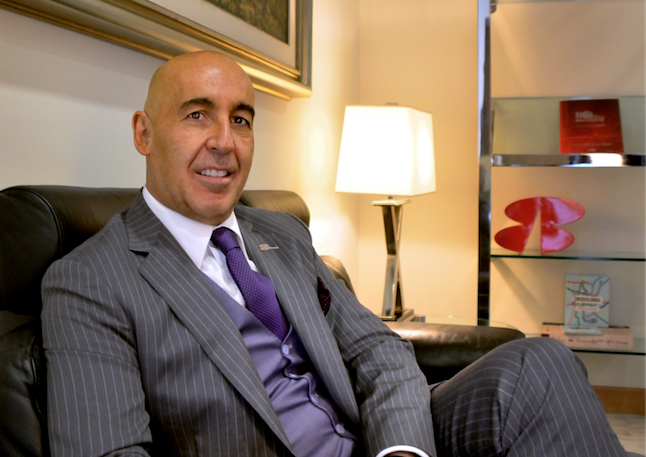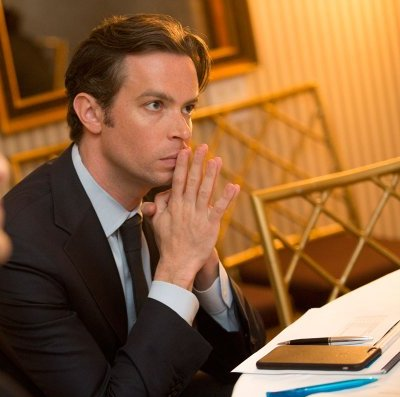Is it Possible for Value Investors to Find Opportunities in the Banking Sector?
| By Alicia Miguel | 0 Comentarios

A lot of fund value investors tend to avoid the banking sector altogether due to a number of reasons: a difficulty in understanding it’s business, the prolonged low interest rate environment, the lack of growth seen in credit, a poor market capitalization and a bad operating earnings trend. Despite these perceptions we are going to prove how an investment idea is possible to find in this sector with some banks that do have clear and sustainable competitive advantages or ‘moats’; especially strengthened in an increasing interest rate environment in the U.S.
Investment idea – Bank of the Ozarks
What would you say if I told you there was a commercial bank that has increased their earnings per share and its total assets by more than 2,000% in the last 20 years? It also boasts the highest quality of assets in the US and we managed to buy its shares below 15x its last twelve month earnings in September 2017?
I discovered Bank of the Ozarks 5 years ago, on a business trip to London while reading the American Bankers Association magazine in J.P. Morgan’s reception. I was so impressed by what I read about the bank that I began doing additional research and also came across its success story in other magazines, like Bank Director. In August this year, Ozarks was awarded for a 5th time in a row and for the 7th time running the number 1 bank in the US.
Bank of the Ozarks is a regional American bank founded in 1903 in Jasper, Arkansas with a market cap of USD 5269 million and 251 offices spread across 9 States in the U.S. Its main business is in loans servicing commercial real-estate development, office construction and other similar projects under the RESG unit or Real Estate Specialty Group. This division represents 80% of its total loan book of $15 billion dollars and is financed entirely from capturing deposits. Until this point it may seem like any other mortgage lending bank but what really makes Bank of the Ozarks an extraordinary bank?
1) Ultraconservative mortgage awarding policies.
The Real Estate Specialty Group (RESG) is made up of an experienced team of 107 employees of which 40 of them are in charge of origination. RESG works in the nonrecourse loans with a higher risk. In case of default, the bank only has collateral on the value of the property and the yield it generates to recover the loan. In exchange, these non-recourse loans are priced at a higher rate than the market.
So what does make Bank of the Ozarks different from other commercial banks?
It’s team of bankers in charge of origination are probably one of the main reasons with George Gleason, CEO since 1979, also heading the team and signing off each of the loans for the past 14 years. The bank is also very selective financing only certain properties and constructions in prime locations catering only to experienced customers with strong a solvency record. They even have the ability to almost transform a nonrecourse loan into one with recourse with their bad-boy carve-outs T&Cs in the event of default. Their experience and track record serve as testament to all these attributes. In the last 14 years, for example, they’ve only experienced losses on 2 loans (in 2009 and 2011) worth up to $ 10 million dollars from a total loan book of $15 billion! On top of this, the bank is always the only borrower in the senior trench of the deal, meaning they’re the least exposed in the capital structure of the loan and the borrower must ALWAYS put forward 50% of capital in advance. Another interesting fact working to the bank’s advantage can be seen in their average Loan to Value and Loan to Cost ratios. In the last few years, Loan to Value has declined to 42% and Loan to Cost to 49% after seeing highs of almost 70% around the time of the credit crunch. In today’s landscape, this could well be the most conservative loan book across the country. In June this year, George Gleason announced that he would dedicate approximately 75% of his time to the RESG division for the next two years, shortly before announcing the departure of Dan Thomas, longstanding RESG Chief Lending Officer.
Lastly, the conservative credit provision policy is clearly reflected in the quality ratios of their assets not only in their most recent filing but also consistently across their recent reporting history. As of 30th September 2017:
Allowance for LLS as % T.Loans = 0,55%
Non-performing loans as % T.Loans = 0,11%
Allowance for LLS as % NPLs = 650%
Loans and Leases past due 30days = 0,12%
Net charge-off = 0,09%
2) Seeking opportunity in its loan provision strategy for Commercial Real Estate and Construction – The Arkansas-based bank has only gone after niche markets that have experimented recent problems or difficulties where supply and demand is unbalanced. They therefore come against very few competitors in real estate lending projects ranging from condos, offices and hotels. Their most notable success can be seen in New York City where the bank has been capable of growing their volume of transactions very quickly from 2012, making it account for roughly 20% of the bank’s total loan book. This strategy has lead Ozarks to see a higher than market credit yield, as their interest margin increases at a faster pace than competition. Even the CEO himself defines their strategy the following way:
“What we have tried to do is sort of ignore the headlines to a great extent, I mean certainly you to have to take larger macroeconomic and market themes into account. But we have really tried to not let that drive our decisions, but instead to look at the supply demand metrics of each sub-market market and macro market and the relative competitive position of each product in the market and do a much deeper level of analysis on projects”.
3) Strong growth in Real Estate lending volumes.
Gleason expects to double the RESG business in the next 3 to 4 years and twofold in the following 7 to 8 years. It’s ambitions cover not only commercial real estate but also the expansion of other sectors including marine, SMEs and leasing. Their ambition is supported by their strong organic growth in a sector that is unlikely to grow organically.
In addition to this, there is also a strong inorganic component behind it’s success, after completing over 15 transactions from 2010. Each transaction has been accretive during the 1st year not only in terms of tangible value per share but also in their earnings per share.
The most interesting aspect of their organic and inorganic growth has been their unbeatable efficiency margin close to 30%, unseen in any other competitor, neither in the U.S. nor in Europe.
4) George Gleason, Bank of the Ozarks’ Chief Executive Officer (CEO). Management’s commitment and aligned interest to the company’s performance is exemplified in it’s CEO history. He bought a controlling stake in the bank in 1979 at a time when the total number of employees was 12, assets were $28 million and he was only 25 years of age. In 2003, he set up the RESG division with Dan Thomas commanding the team. Since 2010, Ozarks has completed 15 acquisitions becoming the largest bank in Arkansas and never allocate more than 50% of total purchase price to goodwill. Any investor, who would have co-invested with Gleason in the 1979 IPO, would have obtained a compound annual return of 22% including dividends when the average competitor has only seen a 4% return and the S&P 400 Mid Cap, a 10%. George harnessed his parents experience and began working at the early age of 5, when he was already in charge of set tasks within his father different businesses. Once he joined the bank, he founded and fostered a culture to motivate employees on a continual path of year-on-year performance, making sure they always felt were part of the company and also carried a sense of holding a stake in it. During this time and until today, George has managed to grow the profit in compound interest towards 19%, with a total return over its own funds and efficiency at the top of the sector.
Then why has its share price dropped by almost 30% from March’s all-time highs? There are 2 reasons behind this:
1) Muddy Waters Capital’s Short Selling note and skepticism over it’s Commercial Real Estate line of business. Muddy expressed concerned over the banks provision for loan losses, assuming it did not have enough cash to cover itself in the event of rising non-performing loans. It also believed it’s total off-balance sheet liabilities were becoming unsustainably high.
Answer 1) the provisions calculated by any bank are based on the quality of its assets. In Ozarks’ case, we are talking about one of the most high quality loan books, made evident by only experiencing losses on 2 of their transactions during the recent credit crunch. It’s average LTC and LTV of are healthily positioned at around 45%. What this means is that if a borrower would like to apply for a $100 million dollar credit, Ozarks
Answer 2) Even though the off-balance sheet liabilities add up to $11 billion dollars, mainly from their RESG side of business, most of these loans are senior, meaning Ozarks would be the last to provide funding for credit but the first to receive any repayment. The bank also demands collateral against the loan worth up to 2x the value of the credit. Tim Hicks, Chief Administrative Officer, showed no qualms when openly admitting that 92% of loan applications it receives are surprisingly rejected!
2) Dan Thomas quits as Chief Lending Officer of Ozarks’ RESG division. On the 28th July, Dan Thomas suddenly announced his departure from the firm forcing the share price into a sharp 12% decline.
Answer 3) Even though the longstanding Chief didn’t reveal his true motives behind leaving the company and despite the fact he was one of the masterminds behind the growth and the bank’s spectacular track record during his tenure, it may seem that George Gleason’s earlier decision and public announcement to commit a larger part of his time to overseeing the day to day operations of the RESG unit was not well-received by Dan. Despite these changes in senior management, we still believe the RESG unit is staffed with experienced, independent and long-serving employees equally capable of continuing on with the business alongside the CEO. For us, it would be far more worrying if we were to see the CEO suddenly leave. And how much have we paid for this extraordinary franchise? The average price paid was $43 per share and approximately 14-15x it last twelve month earnings. We estimate its intrinsic value at $66 per share, after applying a 21x price to earnings multiple for the next twelve months against a 15,5x observed multiple for the sector in the US.
And how much have we paid for this extraordinary franchise?
The average price paid was $43 per share and approximately 14-15x it last twelve month earnings. We estimate its intrinsic value at $66 per share, after applying a 21x price to earnings multiple for the next twelve months against a 15,5x observed multiple for the sector in the US.
As of today, we see a low probability in there being a recession in the US economy (at least within the next quarters) but despite this we would still apply a conservative approach and calculate an intrinsic value assuming that scenario were to take place. The resulting intrinsic value would therefore be $35 per share, placing it 18% lower than our average price paid. If it does happen to reach these levels, we would seek to increase are holding in this company. As a reminder, it is important to not only buy extraordinary companies but also not making a mistake in overpaying for them. Coca-Cola’s case in 1998 should serve as a reminder.
Appendix: Ratio definitions and quality of assets chart.
Allowance for LLS as % T.Loans are the provisions made to face any future losses.
Non-performing loans as % T.Loans are the unpaid loans with more than 90 overdue, where neither capital nor interest is paid off.
Allowance for LLS as % NPLs is the coverage ratio.
Net charge-off is the total unpaid debt by the company minus any recovered payments.















